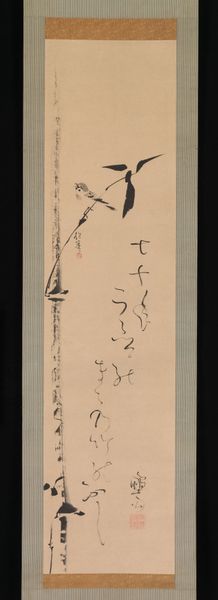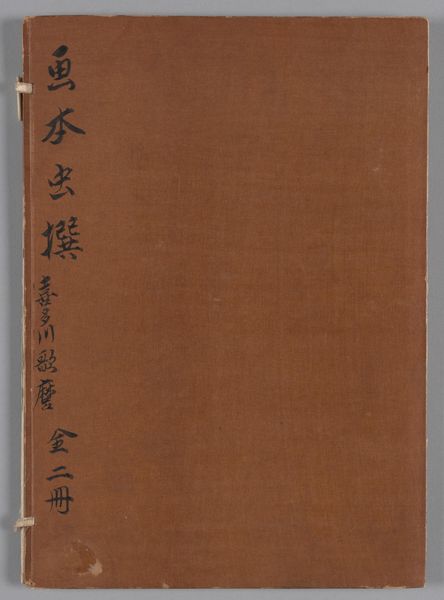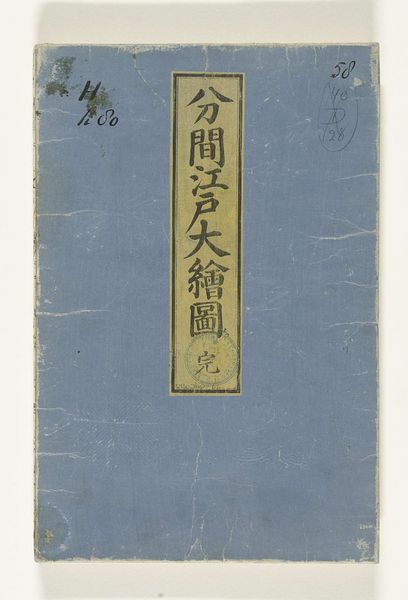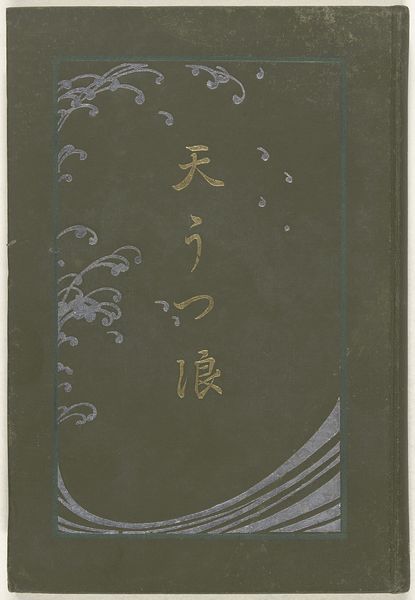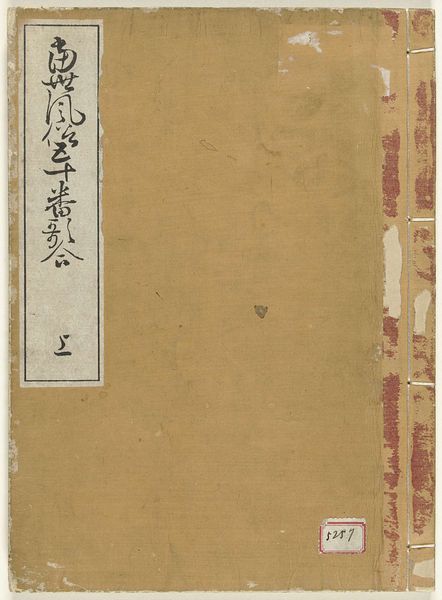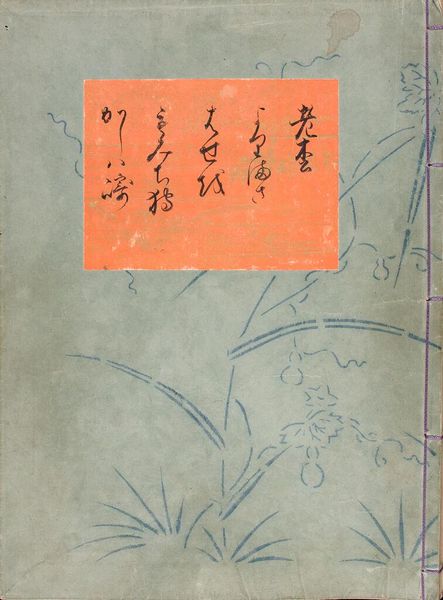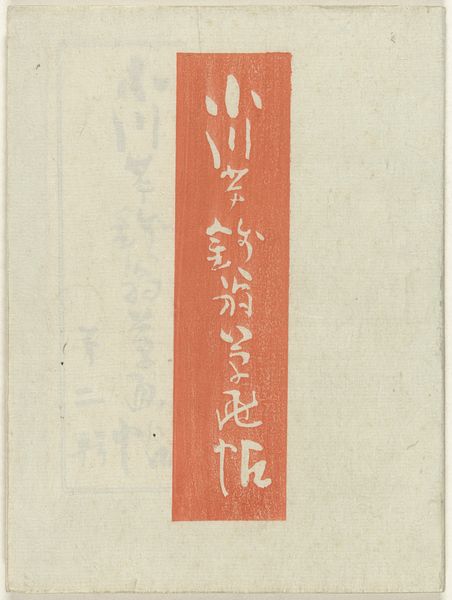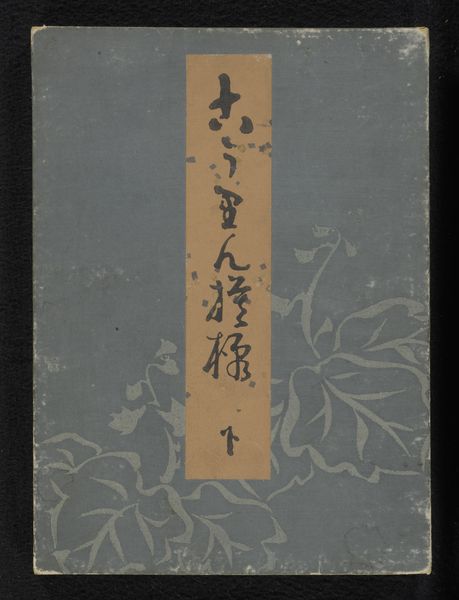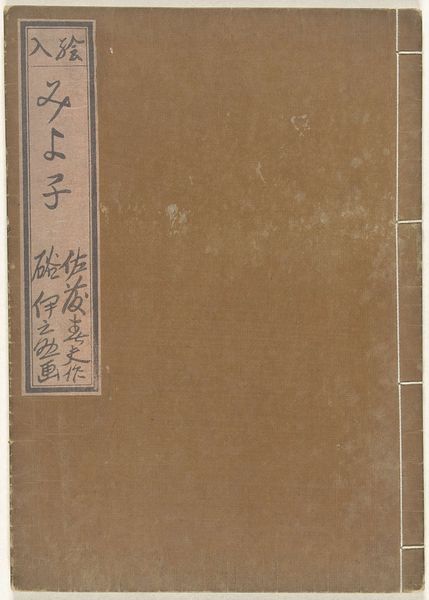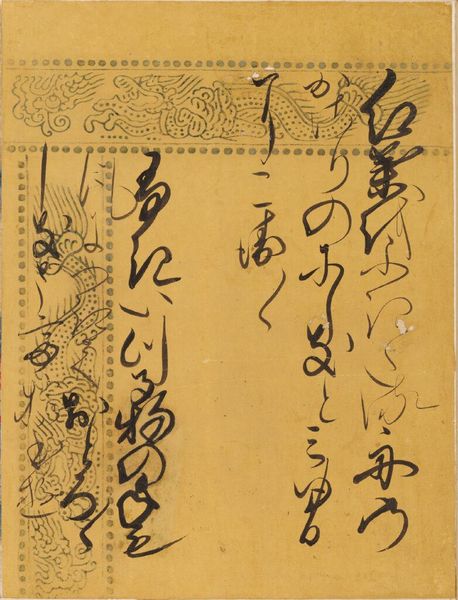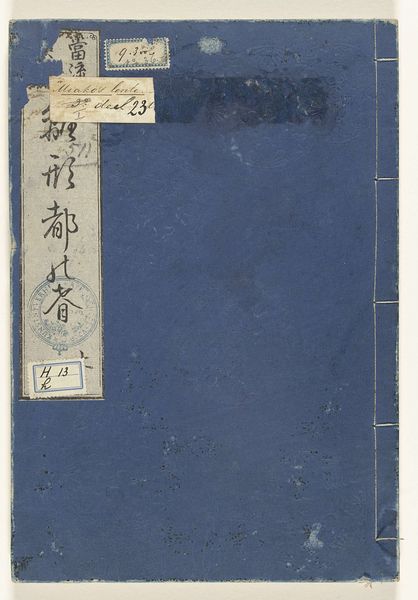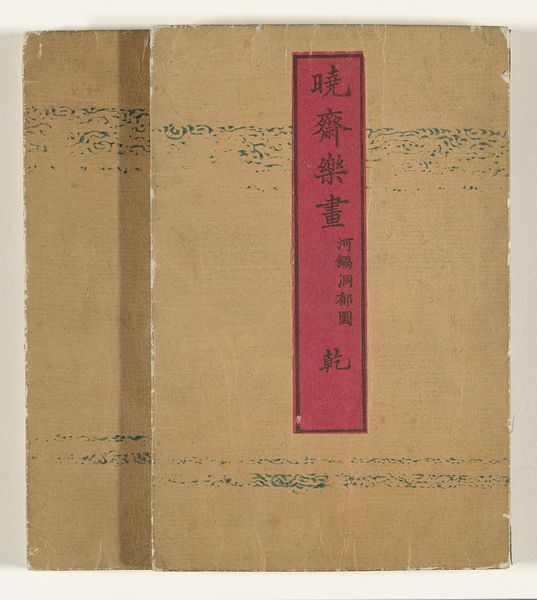
drawing, paper, ink
#
portrait
#
drawing
#
asian-art
#
paper
#
ink
#
watercolor
Dimensions: height 295 mm, width 184 mm
Copyright: Rijks Museum: Open Domain
Curator: This is Tekeningen van Sasei, which translates to Drawings by Sasei, created likely between 1905 and 1910. It is now held in the Rijksmuseum's collection. Editor: The aged paper gives it such a wonderful feeling of impermanence, like these captured moments could simply vanish. It appears so understated at first glance, just some faint, simple ink drawings. Curator: The drawings are actually rendered in ink and watercolor on paper. Sasei was exploring portraiture, likely pulling from the well of Japanese art traditions that so valued brushwork and capturing spirit. I find a deep continuity with older calligraphic portrait styles, conveying inner qualities through elegant abstraction. Editor: Yes, abstraction here feels key. I am particularly interested in the production and choice of materials, from paper to ink. This minimalist style is deeply evocative in part because it is using readily available, accessible media; its very nature insists on broad communication and participation rather than art as rarefied display of skill and expensive supplies. It also brings up some questions about artistic labor; were these produced rapidly as part of a daily ritual or more labored artistic endeavor? Curator: A daily ritual! That strikes a chord. You know, I wonder how we should interpret Sasei's seemingly simple, economic visual style in relation to, say, the much grander portrait traditions we might see in Europe during that period? Does it indicate something about cultural values around individuality and presentation? Editor: Absolutely! And given the period, this might challenge more dominant notions of "high art". Its power derives less from complicated methods than the immediate communicative quality inherent to drawings done in common media such as ink on paper. I keep coming back to that material honesty, that unpretentious quality which has been embraced and reinterpreted over decades. Curator: And despite that honesty, or maybe because of it, there's something universal in these captured expressions, too. We can connect with them, even without knowing the specifics of their cultural context, can’t we? It speaks to something fundamentally human. Editor: I think so. It's that balance between specific cultural knowledge and an underlying empathy that makes this such a compelling set of drawings. It allows me to consider my own connections to both artist and subject on an individual basis.
Comments
No comments
Be the first to comment and join the conversation on the ultimate creative platform.
